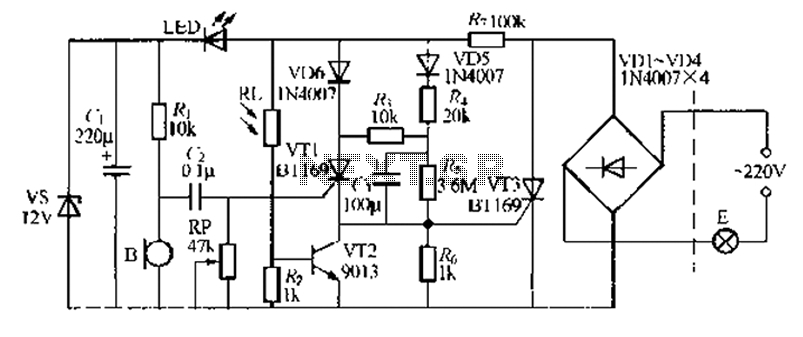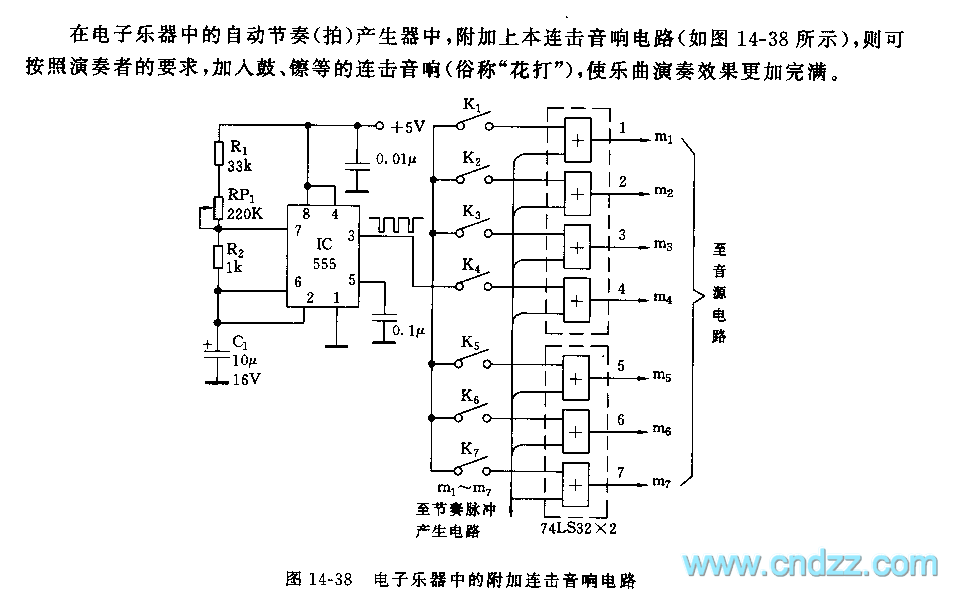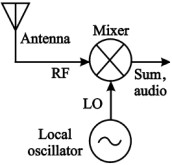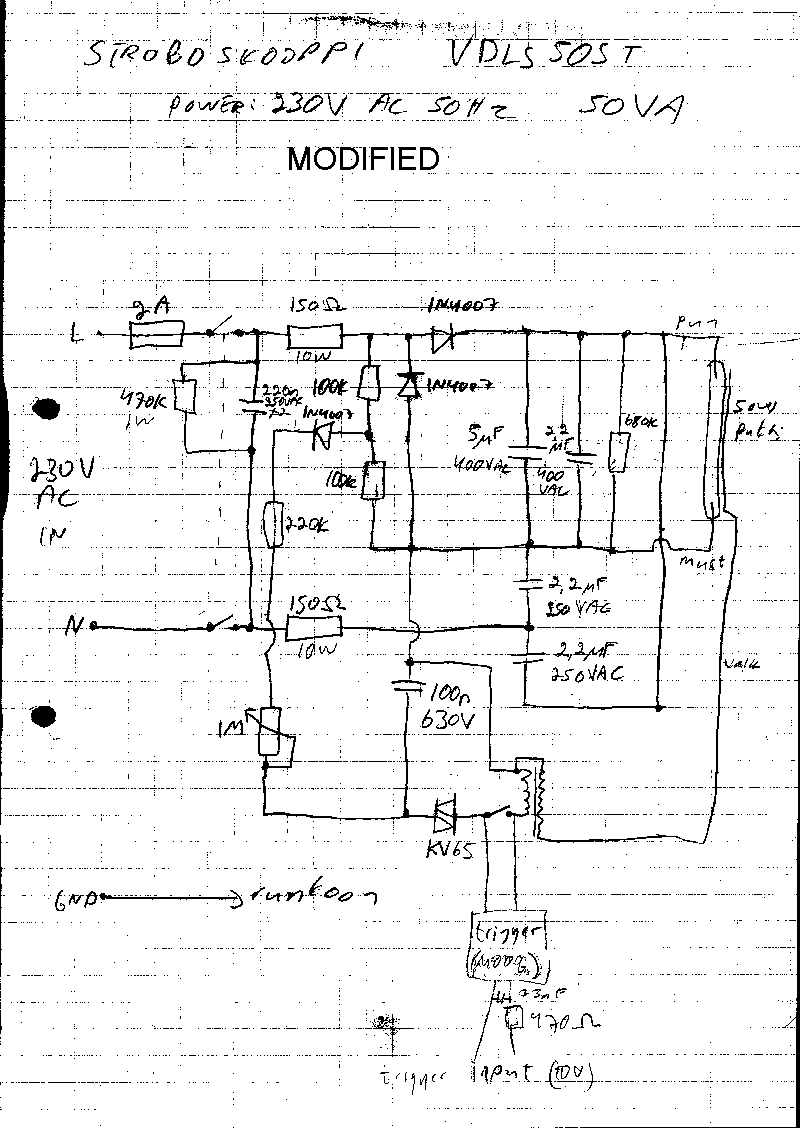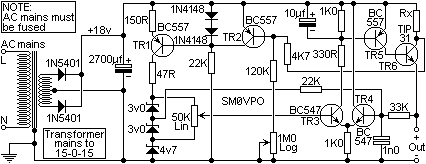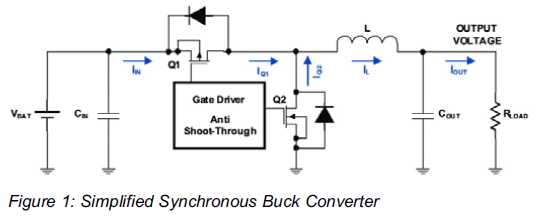
Power protection circuit

To protect portable emergency power repeaters from reverse or excessive voltage, diode D1 prevents damage from incorrect polarity, while the zener diode voltage sets the maximum voltage that can reach the rest of the circuitry. Additionally, a fast-blowing fuse rated above the SCR current rating should be used.
In this circuit, diode D1 plays a crucial role in safeguarding the system by allowing current to flow in only one direction, thereby preventing reverse polarity damage that could compromise the integrity of the emergency power repeater. The zener diode is strategically placed to clamp the voltage at a predetermined level, ensuring that any voltage exceeding this level does not propagate to sensitive components within the circuitry. This mechanism is essential for maintaining operational reliability, especially in unpredictable environments where power fluctuations may occur.
The inclusion of a fast-blowing fuse is an important safety feature, as it provides an additional layer of protection against overcurrent conditions. The fuse should be rated higher than the current rating of the silicon-controlled rectifier (SCR) used in the circuit to avoid nuisance blowing during normal operation, while still being capable of interrupting excessive current in fault conditions.
Overall, this configuration enhances the robustness of portable emergency power repeaters, ensuring they operate efficiently and safely under varying electrical conditions. Proper selection of components, including the ratings of the diode, zener diode, and fuse, is critical for optimal performance and protection of the entire system.To safeguard portable, emergency power repeaters from reverse or excessive voltage, Dl prevents incorrect polarity damage, and zener voltage determines the maximum voltage that will reach the rest of the circuitry Use fast blowing fuse rated greater than the SCR current rating.
In this circuit, diode D1 plays a crucial role in safeguarding the system by allowing current to flow in only one direction, thereby preventing reverse polarity damage that could compromise the integrity of the emergency power repeater. The zener diode is strategically placed to clamp the voltage at a predetermined level, ensuring that any voltage exceeding this level does not propagate to sensitive components within the circuitry. This mechanism is essential for maintaining operational reliability, especially in unpredictable environments where power fluctuations may occur.
The inclusion of a fast-blowing fuse is an important safety feature, as it provides an additional layer of protection against overcurrent conditions. The fuse should be rated higher than the current rating of the silicon-controlled rectifier (SCR) used in the circuit to avoid nuisance blowing during normal operation, while still being capable of interrupting excessive current in fault conditions.
Overall, this configuration enhances the robustness of portable emergency power repeaters, ensuring they operate efficiently and safely under varying electrical conditions. Proper selection of components, including the ratings of the diode, zener diode, and fuse, is critical for optimal performance and protection of the entire system.To safeguard portable, emergency power repeaters from reverse or excessive voltage, Dl prevents incorrect polarity damage, and zener voltage determines the maximum voltage that will reach the rest of the circuitry Use fast blowing fuse rated greater than the SCR current rating.
